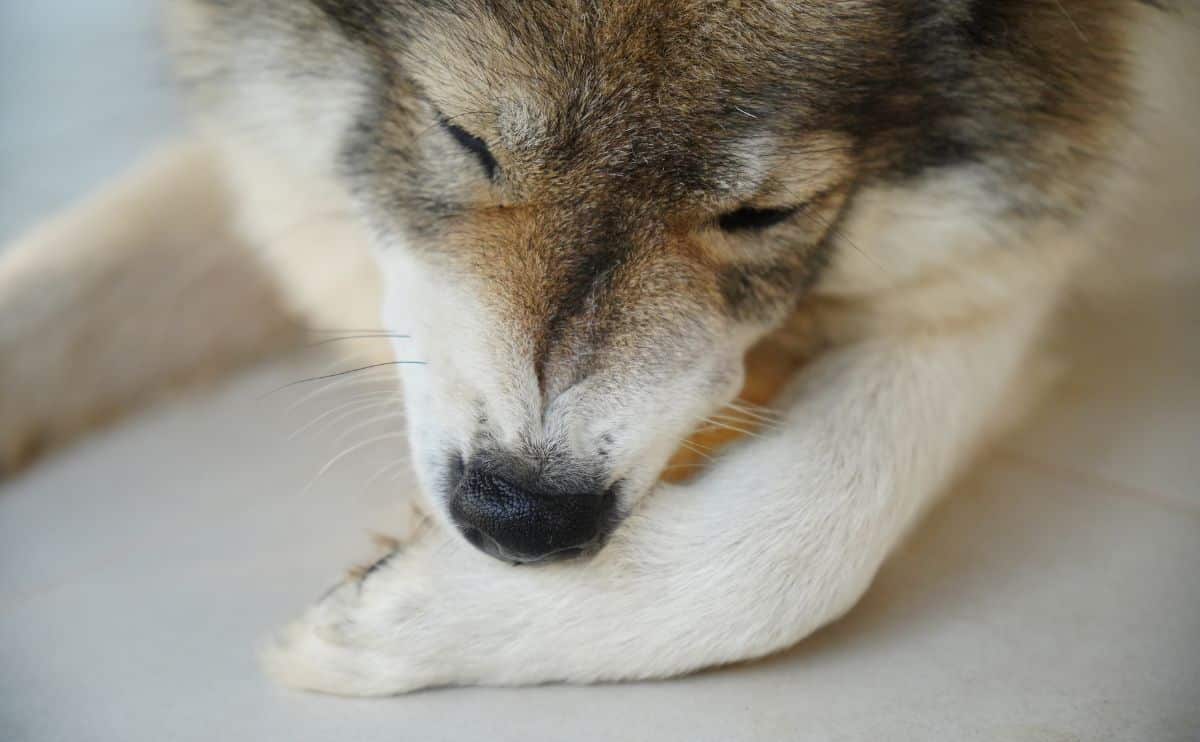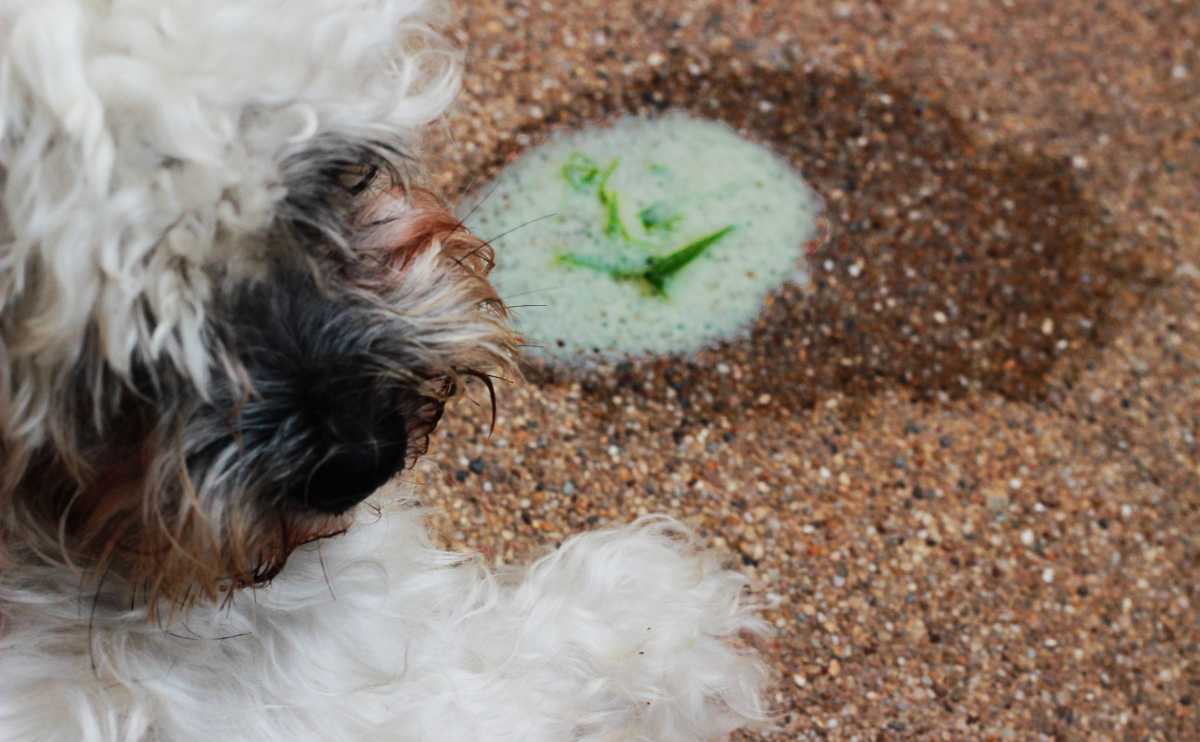Is Your Great Dane At Risk? 8 Common Health Issues That Could Threaten Your Great Dane’s Life
When you purchase through links on our site, we may earn a commission. Here’s how it works.
Great Dane health issues aren’t just common, they’re often critical. These gentle giants are prone to a unique set of life-threatening conditions that can strike fast and without warning. From sudden gastric torsion to silent heart failure, knowing what your Dane is up against isn’t optional; it’s essential. Whether you’re a new owner or a lifelong fan of the breed, understanding these risks could be the key to a longer, healthier life for your dog.
Table of Contents

Planning Ahead For Vet Bills
Great Danes are susceptible to several serious and often costly health conditions, from bloat and heart disease to joint and bone disorders. Veterinary care for these breed-specific issues can get expensive quickly. Pet insurance can help offset the cost of exams, treatments, and even emergency surgeries, giving you peace of mind while protecting your dog’s health.
Explore top-rated pet insurance options for Great Danes and get a free quote using the form below.
8 Common Great Dane Health Problems
Great Danes are known for their intelligence, low energy, and guard-like behavior. Unfortunately, this giant breed only averages a lifespan of 6 to 8 years, with an average mature age of 3 years old, so it’s important that you know what health issues may arise so you can help your dog live as long as possible.
1. Gastric Torsion
The most common cause of death for Great Danes is gastric torsion, also known as canine bloat. When humans overeat or eat too fast, we may become bloated and gassy. Fortunately, we can recover quickly from this with minimal discomfort. Dogs are not as lucky, and canine bloat can become life-threatening quickly.
As food passes through a dog’s stomach, gas builds up, and the stomach expands. If the stomach stretches beyond its limits, blood circulation to the heart is prevented, as well as to the stomach. Lack of blood circulation to the stomach results in stomach tissue dying.
The stomach can begin to twist at the top and bottom, which prevents the gas from moving out of the stomach. The stomach experiences extreme damage that is unrepairable. If caught early enough, the dog can receive emergency care to help relieve the gas buildup.
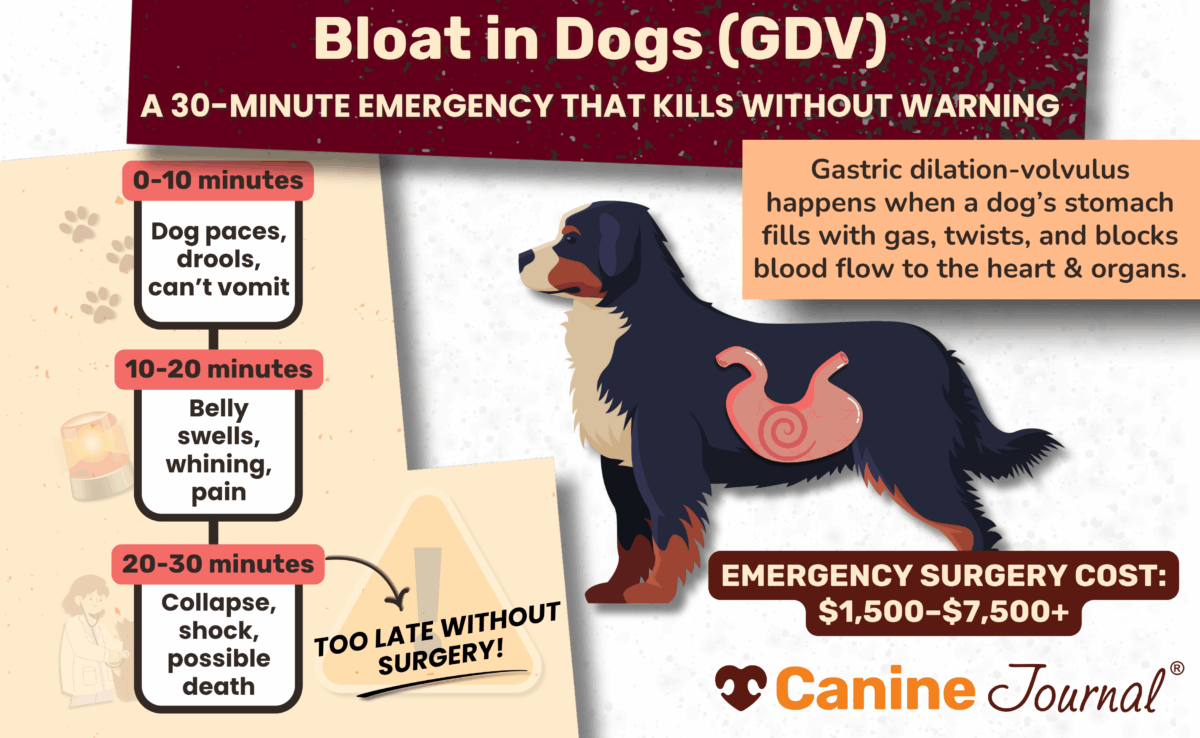
However, it is often difficult to catch bloat early on, and it is often too late to help the dog, which is why it is a common fatal disease. Dogs can die within hours of bloating, so it’s essential to act fast if you think your dog is experiencing it.
Because this condition is often fatal, pay attention to any signs of discomfort. Great Dane dying symptoms, in this case, can present quickly and without prior warning. Learn More About Canine Bloat.
Consider a slow-feeder dog bowl, foods for gassy dogs, or smaller, more frequent meals, as this can slow down eating and reduce the chances of bloat.
Bloat Symptoms
- Differences in normal personality and physical behavior
- The stomach appears larger, distended, and hard
- Lack of normal digestive sounds (place your ear on your dog’s stomach and note if there is any difference)
- Standing in a hunched-over position, unable to get comfortable
- Refuses to lay on their side
- Dry heaving, vomiting foam, or mucus
- Anxious
- Pacing
- Whining
- Licking the air
- Looking at their abdomen
- Standing with their legs spread
- Shallow breathing
- Weak pulse
- Collapsing to the ground
- Cold gums that are dark red (or blue or white in later stages)
- Attempt to defecate but are unable to
Treatment
Take your dog to the vet immediately. Depending on how soon you catch the onset of bloat will determine the vet’s course of treatment.
If the stomach is not twisted, your vet may place a small tube down the dog’s throat (while they are sedated) to help gas be removed from the stomach.
If the stomach is twisted, surgery will most likely take place, and the vet will make an incision into the dog’s stomach to relieve gas pressure. The vet may also staple your dog’s stomach in place so that if this occurs again, the stomach cannot expand.
After either course of treatment, your dog should undergo a complete physical to make sure no severe damage occurs. Stomach tissue may need to be removed to preserve the stomach’s function. Your vet may recommend having an anti-gas medication on hand for your dog.
Research Spotlight: Genetic Risk of Bloat in Great Danes
A 2018 study published in PLOS ONE examined the gut microbiome and immune-gene associations in Great Danes. Researchers found that specific alleles, particularly in the TLR5, DLA88, and DRB1 genes—were linked to a threefold increase in the lifetime risk of Gastric Dilatation-Volvulus (GDV), also known as bloat.
A related study cited in the same research indicates that approximately 37% of Great Danes will experience GDV at some point in their lives. This reinforces the importance of early detection, preventive strategies, and potential surgical interventions like prophylactic gastropexy.
2. Hip Dysplasia
Hip dysplasia often manifests itself in larger dog breeds, and Great Danes fit the bill. Sadly, hip dysplasia is a chronic condition in which the head of the femur bone doesn’t fit into the hip socket correctly. If you adopt a Great Dane from a breeder, ask for radiographs of the parents’ hips and speak to them about the parents’ health history. Learn More About Hip Dysplasia.
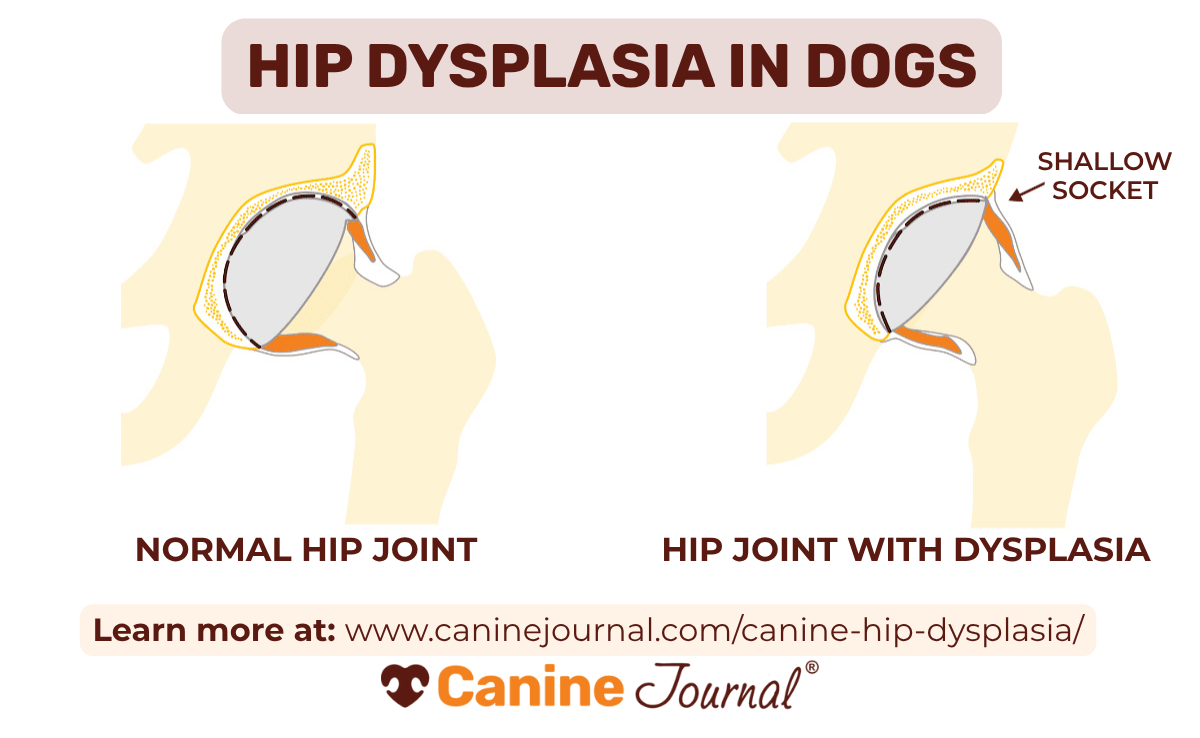
Hip Dysplasia Symptoms
- Pain or discomfort during exercise
- Lameness
- Stiff back legs
- “Bunny hop” like run
- Stiffness getting up or running
- Difficulty getting up
- Muscle tone loss in back legs
- Lack of enjoyment with physical activities that were previously enjoyable
Treatment
Your vet will probably do an x-ray to view the dog’s hip sockets and make an appropriate diagnosis with a treatment plan.
3. Dilated Cardiomyopathy (DCM)
Dilated cardiomyopathy causes the heart to enlarge and is most likely genetic. It is a very serious condition that often does not get diagnosed until it is too late to help. There are some treatment options, but DCM has no cure.
DCM Symptoms
Unfortunately, cardiomyopathy commonly goes undiagnosed until the dog dies. However, if you notice any of the symptoms below, take them to the vet immediately.
- Lethargy
- Weight loss
- Weakness
- Coughing
- Increased heart rate
- Difficult breathing
- Abdominal distension
- Difficulty exercising
- Decreased appetite
- Less happy and more depressed
Treatment
Several drugs are used to treat the symptoms of dilated cardiomyopathy (DCM).
- Diuretics – remove excess fluid from the body
- Angiotensin-converting enzyme inhibitors – lower blood pressure
- Cardiac glycosides – slow heart rate and strengthen heart contractions
- Vasodilators – dilate the arteries and veins so the heart doesn’t have to work as hard
- Bronchodilators – help a dog with DCM breathe easier
- Pimobendan – lowers the pressure in arteries and veins and improves the heart muscle strength
- Antiarrhythmic drugs – help control arrhythmias
4. Tricuspid Valve Disease
Tricuspid valve disease is a congenital condition where the heart valve doesn’t function correctly. As a result, the left side of your dog’s heart may fail.
Tricuspid Valve Disease Symptoms
- Distended stomach
- Decrease in exercise ability
- Difficulty breathing
- Heart murmur
- Increased heartbeat
- Weakness
Treatment
If there is a large amount of fluid in the dog’s heart, the vet may remove some fluid. The dog will probably be placed on a low-salt diet, and overweight dogs will be encouraged to lose weight. Moderate activity is okay, but your dog should avoid exertion.
The vet may suggest some supplements and vitamins, such as:
- Vitamin D
- Coenzyme CoQ10
- Omega 3
Other medications that may be prescribed include:
- Digoxin
- Furosemide
- Angiotensin enzyme inhibitor
These treatments can improve your dog’s quality of life. If they are not responding to treatment, your vet may refer them to a cardiac vet specialist, and surgery may be considered to replace the valve.
5. Cancer
Osteosarcoma, or bone cancer, is commonly diagnosed in Great Danes. Great Danes are also at high risk for other cancers, including lymphosarcoma, hemangiosarcoma, and mast cell tumors.

Pay attention to small and large bumps under the skin, unexplained odors, and weight loss, as these are all early signs of cancer in dogs.
Cancer Symptoms
- Lumps in various parts of the body
- Swelling
- Lameness
- Joint or bone pain
- Tired
- Anorexia
Treatment
Depends on the stage of the disease, the dog’s age, etc. Your vet will talk with you about a course of treatment for your dog.
6. Addison’s Disease
Also known as hypoadrenocorticism, Addison’s disease forms from the decrease in corticosteroid secretion from the adrenal gland. (If there was an increase of this hormone, your dog may have Cushing’s disease.)
Addison’s Disease Symptoms
- Common in young to middle-aged female dogs
- Lethargy
- Anorexia
- Vomiting
- Muscle weakness
Treatment
The most common treatment is replacing the mineralocorticoids and glucocorticoids in the body. Florinef is commonly prescribed and given twice per day.
Blood sodium and potassium levels are monitored to determine the correct dose for the dog. After the dog is regulated, the levels are reached 2 to 30 times per year, and adjustments are made as necessary.
Another treatment option is an injection of DOCP, which is administered every 25 days. It is known to regulate better than Florinef. Prednisone may also be prescribed to your dog in conjunction with DOCP.
7. Wobbler Syndrome
Also known as cervical spondylomyelopathy (CSM), wobbler syndrome affects the cervical spine at the neck and is common in large breeds. The term wobbler syndrome comes from the wobbly walk that presents itself in dogs who have it.
Wobbler Syndrome Symptoms
- Wobbly gait
- Stiff neck
- Weakness
- Shorter stride
- Weak front limbs
- Partial or complete paralysis
- Muscle loss near the shoulders
- Scuffed nails from uneven walking
- Difficulty getting up
Treatment
Depending on the severity and location of the spinal compression, your vet may or may not recommend surgery. Your dog may be put on bed rest and need to be moved to their other side every 4 hours to prevent bed sores. A catheter may be inserted to allow the dog to rest.
If medically treated, activity may be restricted for more than 2 months. Surgery is commonly looked at as the best option, but there are complications that you should ask your veterinarian about. Physical therapy will most likely be suggested for post-op dogs to avoid further damage and to help them recover.
8. Cruciate Ligament Tears
CCL tears are the equivalent of ACL tears in humans. Cruciate ligaments are found in the hind legs of dogs and may be partial or complete tears.
CCL Tear Symptoms
- Limping in hind legs
- Awkward posture standing, sitting, or lying down
- Difficulty getting up
- Swelling around the knee
Treatment
Treatment often entails surgery, which can be rather expensive if you don’t have pet insurance. Learn More About CCL Tears.
Do Not Forget Great Dane Skin Problems
Great Danes are also prone to skin problems, including allergies. In Great Danes, allergies to environmental elements like dust, pollen, mold, and food are common. These allergies cause itchy skin, called atopy. It often affects the folds of skin, feet, ears, and belly but can cause itchy skin anywhere.
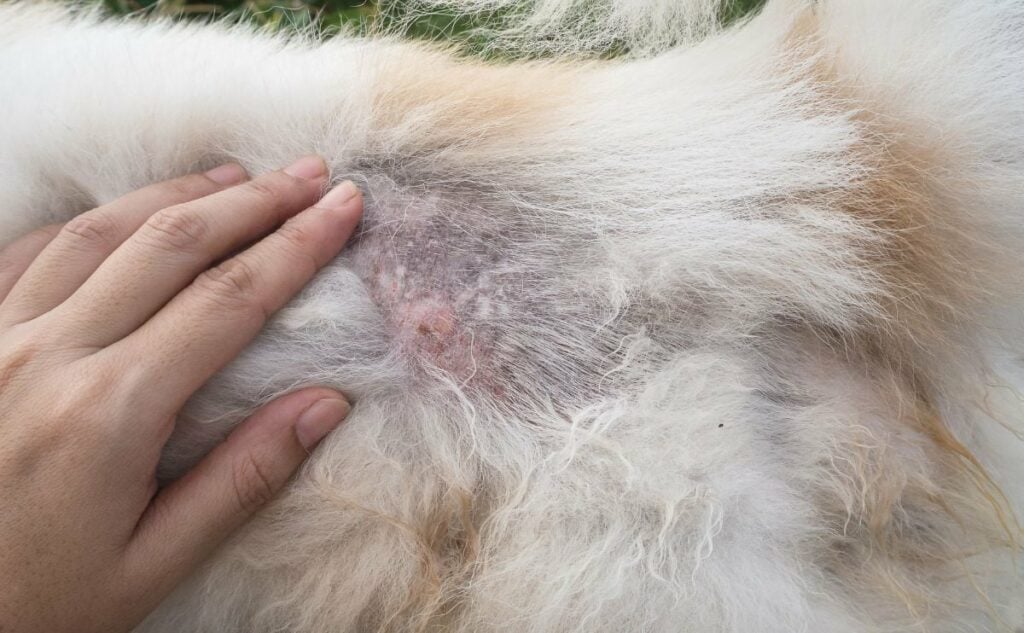
Great Danes’ skin problems can lead to infection on the paws, which is extremely painful. Your dog may need allergy treatment to prevent skin issues.
Average Costs For Great Dane Health Issues
Great Danes are prone to several serious and often complex health conditions, many of which can be expensive to treat, especially when surgery, emergency care, or long-term treatment is required. The following cost estimates are based on real claims submitted to Fetch Pet Insurance for Great Danes.
- Fetch averages a claim of $1,287 for Addison’s disease.
- Fetch claims for wobbler syndrome average $3,866.
- Fetch claims average $3,543 for cranial cruciate ligament (CCL) tears.
Best Pet Insurance For Great Danes
We know you’ll always do what you think is best for your dog and care for them as you see fit. However, are you looking out for your wallet when pet emergencies arise? Those claim amounts weren’t anything to shrug off.
Unfortunately, pet parents are often faced with the difficult decision of choosing to treat their dog and pay for an expensive vet bill, not getting the dog help because the costs are too high. In extreme cases, pet parents even decide to euthanize their best friend because they can’t afford treatment. This is a situation we’ve heard of too many times, and it breaks our hearts that parents are faced with it.
| Pet Insurance Ranking | Company | Review |
|---|---|---|
| Best Overall |  | Read Review |
| Best For Puppies & Kittens |  | Read Review |
| Best Unlimited Payouts | Read Review | |
| Best Value |  | Read Review |
| Best Coverage |  | Read Review |
| Most Affordable |  | Read Review |
| Best Vet Direct Pay |  | Read Review |
| Best For Pre-Existing Conditions | Read Review | |
| Best Accident-Only Plan |  | Read Review |
| Best For Customizable Plans |  | Read Review |
| Best For Exotic Pets |  | Read Review |
That’s why we recommend pet insurance, so when your dog is hurt and needs medical attention, your bank account isn’t the deciding factor. You might be surprised to learn that the average pet insurance policy is less than $50/month. Some are even less than $30/month, depending on the coverage options you choose.
You can read reviews of pet insurance companies and get an idea of how much it might cost you by reading our pet insurance reviews.
Frequently Asked Questions About Great Dane Health
Great Dane owners often have important questions about their dog’s health risks, symptoms, and care. Below are answers to some of the most frequently asked questions to help you stay informed and proactive. If we missed yours let us know in the comments.
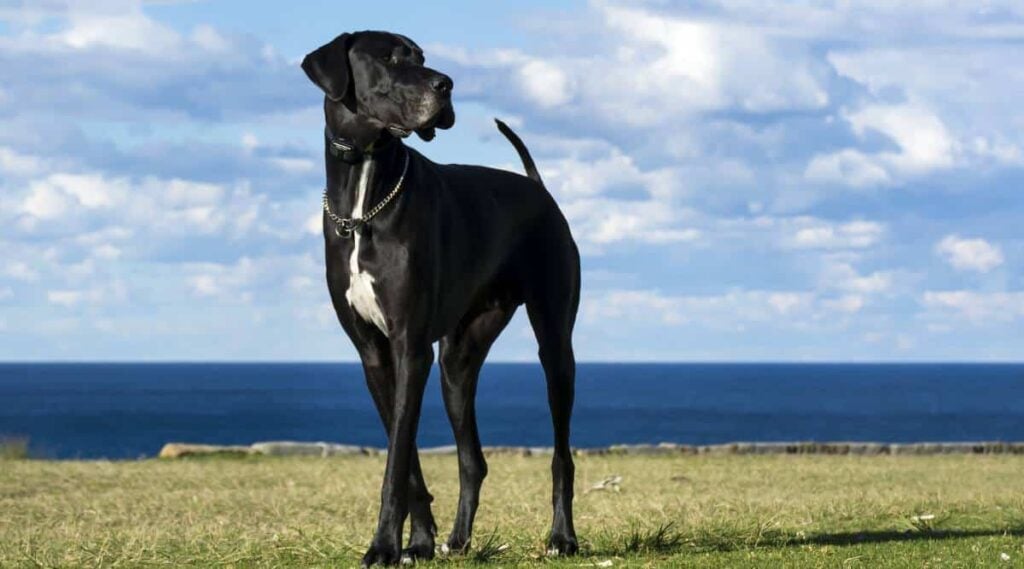
How long do Great Danes typically live, and can health management extend their lifespan?
Great Danes have a relatively short average lifespan of 7 to 10 years due to their size and predisposition to certain health conditions. However, proactive health management, such as early screening for heart disease, maintaining a healthy weight, feeding a large-breed-appropriate diet, and avoiding overexertion during growth, can help prevent complications and potentially extend a Great Dane’s quality of life and longevity.
How can I tell if my Great Dane has heart disease?
Signs of heart issues like Dilated Cardiomyopathy (DCM) include fatigue, coughing, labored breathing, and fainting. Regular cardiac screenings and echocardiograms are essential, especially since many dogs show no outward symptoms until the disease is advanced.
Are Great Danes more prone to cancer than other breeds?
Yes. Great Danes are at higher risk for cancers such as osteosarcoma (bone cancer) and lymphoma. These cancers often progress rapidly, so early detection through routine exams and x-rays is crucial for better treatment outcomes.
What are early signs of hip dysplasia in Great Danes?
Watch for stiffness after rest, reluctance to climb stairs, limping, or a “bunny hopping” gait. Hip dysplasia can lead to arthritis and chronic pain. Early intervention through joint supplements, weight management, or surgery can help reduce long-term damage.
At what age do Great Danes typically develop health issues?
Many health conditions appear as early as 2–3 years of age, though some (like cancer or heart disease) become more common in middle age (4–6 years). Because Great Danes have a shorter lifespan, proactive care and early screening are critical throughout their life stages.
Keeping Your Great Dane Healthy Through Diet, Care, and Lifestyle
While Great Danes are prone to several serious health issues, there’s a lot you can do to support their well-being and longevity. A balanced, large-breed-specific diet helps maintain joint and heart health, while regular exercise, without overexertion, supports muscle tone and mobility. Preventative vet visits, early screenings, and managing your dog’s weight can all reduce the risk of chronic conditions like hip dysplasia and heart disease. Providing a low-stress environment, orthopedic bedding, and daily mental stimulation also plays a major role in keeping your Dane both physically and emotionally healthy.
Share Your Great Dane Story
Every Great Dane has a story, whether it’s overcoming a health scare, finding the perfect diet, or simply making your life brighter. We’d love to hear about your experiences and what you’ve learned along the way. Share your story in the comments below or tag us on social media to join the conversation with other Great Dane owners.
